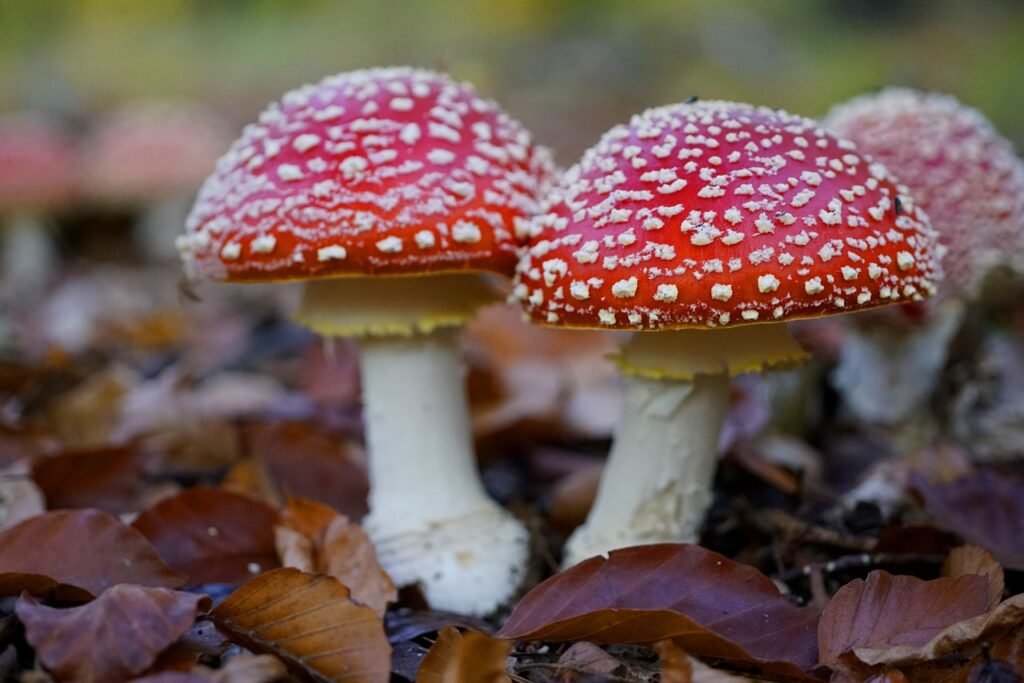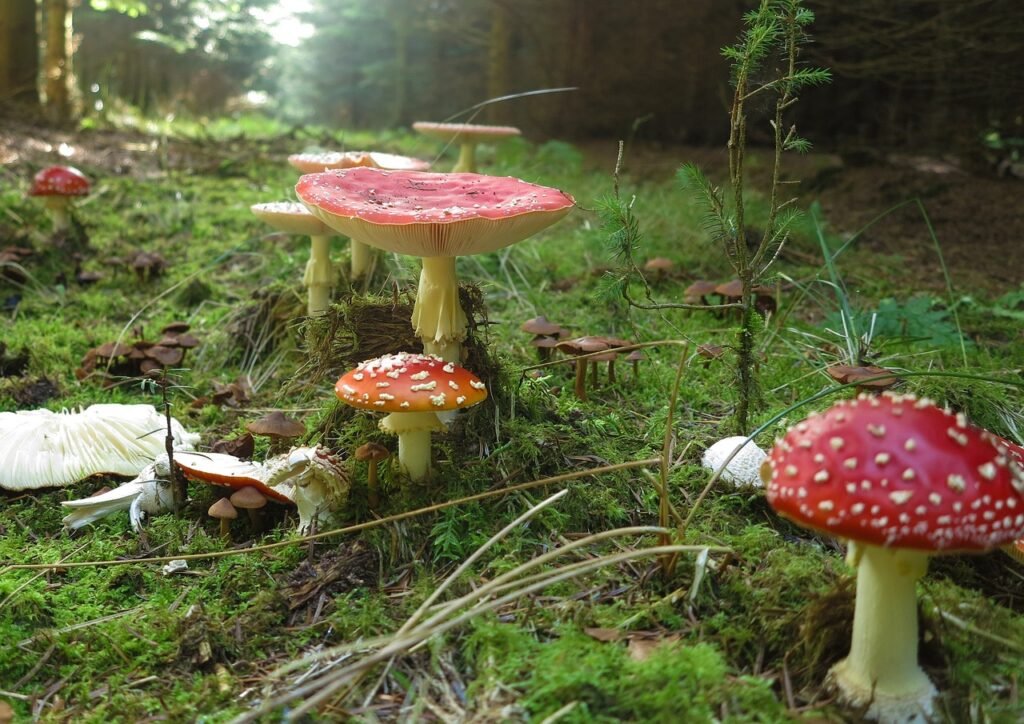Hey there! In this article, “What Happens If You Touch A Poisonous Mushroom?” you’ll dive into the fascinating, yet crucial, world of wild mushrooms and explore what happens if you come into contact with one of the more dangerous varieties. Touching a poisonous mushroom can lead to various harmful effects on your skin, depending on the species, from mild irritation to severe rashes. While some mushrooms only cause discomfort upon touch, others may pose more serious health risks if their toxins are inadvertently ingested after handling. Understanding these potential dangers can help you stay safe while enjoying the great outdoors. Join us as we unpack the facts and myths around these intriguing fungi to keep you informed and out of harm’s way.
What Happens If You Touch A Poisonous Mushroom?
Ever wandered through a forest, admiring the beauty of nature, and stumbled upon a peculiar mushroom? You might wonder, “What happens if you touch a poisonous mushroom?” This curiosity is natural but touching the wrong mushroom can lead to some unexpected and often unpleasant consequences. This article explores what happens when you come into contact with poisonous mushrooms and how you can protect yourself.

The World of Poisonous Mushrooms
Mushrooms are fascinating fungi, but not all of them are safe. While many are harmless and even delicious, others can be toxic and dangerous. Understanding the basic categories of mushrooms is the first step toward staying safe in the wild.
Types of Poisonous Mushrooms
There are thousands of mushroom species, and identifying them can be tricky. Here’s a look at some common toxic varieties:
| Mushroom | Toxic Compound | Symptoms |
|---|---|---|
| Amanita phalloides | Amatoxins | Severe liver and kidney damage, possibly fatal |
| Galerina marginata | Amatoxins | Similar to Amanita, causing liver and kidney failure |
| Gyromitra esculenta | Gyromitrin | Gastrointestinal upset, neurological symptoms |
| Cortinarius species | Orellanine | Kidney damage, delayed symptoms (days to weeks) |
| Amanita muscaria | Ibotenic acid, muscimol | Hallucinations, nausea, vomiting |
These are just a few examples, representing a minor fraction of the dangerous mushrooms out there. Recognizing these toxic species is crucial when you’re out in nature.
Immediate Effects of Touching a Poisonous Mushroom
What happens practically when you touch a poisonous mushroom? The answer isn’t straightforward, as it depends on the type of mushroom and your sensitivity to it. In many cases, simply touching a poisonous mushroom isn’t dangerous, as most toxins require ingestion to cause harm. However, there are some exceptions and specific scenarios where touch can be a problem.
Skin Irritations
Certain mushrooms can cause skin irritations or allergic reactions upon contact. For example, touching the juice or spores of some mushrooms might lead to redness, itching, or a rash. This kind of response is due to your skin’s sensitivity rather than the actual toxicity of the mushroom.
Transfer of Toxins
While most mushroom toxins need to be swallowed to cause harm, some can be absorbed through mucous membranes, such as the eyes or nose. If you touch a toxic mushroom and then rub your eyes or handle food, you risk transferring the toxins to more vulnerable areas of your body.
Severity of Mushroom Poisoning
The severity of mushroom poisoning varies significantly based on the species and amount of toxin involved. Here, we’ll explore what determines the severity and what symptoms might be experienced.
Factors Influencing Severity
Several factors influence how severe a poisoning incident might be:
- Type of Mushroom: Some mushrooms are more toxic than others.
- Amount of Toxin: The quantity ingested or absorbed affects the severity.
- Individual Sensitivity: Some people may be more susceptible to toxins.
- Age and Health: Younger children and people with pre-existing health conditions are at higher risk.
Common Symptoms of Poisoning
Symptoms of mushroom poisoning can range from mild to life-threatening. Here’s a general look at possible symptoms based on toxin type:
| Symptom Category | Examples | Time of Onset |
|---|---|---|
| Gastrointestinal | Nausea, vomiting, diarrhea | 6-24 hours after exposure |
| Neurological | Hallucinations, seizures, confusion | 30 minutes to 6 hours |
| Hepatic (liver) | Jaundice, liver failure | 6-48 hours |
| Renal (kidney) | Kidney pain, urinary issues | Days to weeks |
| Cardiovascular | Heart palpitations, blood pressure changes | Shortly after exposure |
Symptoms can appear quickly or may be delayed, making it crucial to seek medical attention if mushroom poisoning is suspected.
First Aid and Treatment
Knowing how to respond if you or someone else touches or ingests a poisonous mushroom is vital. First aid and proper treatment can significantly affect outcomes.
Immediate Actions
If you suspect mushroom poisoning:
- Avoid Further Contact: Wash your hands thoroughly with soap and water to remove any lingering spores or toxins.
- Do Not Induce Vomiting: Unless directed by a medical professional, avoid inducing vomiting, as this can cause additional harm.
- Collect a Sample: If possible, collect a sample of the mushroom for identification by medical personnel.
Seeking Medical Help
Always seek professional medical help if poisoning is suspected. Be prepared to provide:
- Details About the Exposure: Describe the time, amount, and circumstances.
- Symptoms Experienced: Note any immediate or delayed symptoms.
- Mushroom Sample: If possible, bring the mushroom for identification.

Preventive Measures
The best way to deal with mushroom poisoning is to avoid it in the first place. Here are some preventive measures you can take:
Educate Yourself
Learn about the local mushrooms in your area. Join local foraging groups, read guides, or take courses on mushroom identification. Knowledge is your best defense against accidental poisoning.
Wear Protective Clothing
When foraging or exploring wooded areas, wear gloves and long sleeves to minimize skin contact with mushrooms and other potentially harmful plants.
Be Cautious with Children and Pets
Children and pets are naturally curious and more likely to touch or ingest unfamiliar objects. Keep a close eye on them and educate older children about the dangers of poisonous mushrooms.
Avoid Unidentified Mushrooms
As a general rule, if you cannot positively identify a mushroom as safe, do not touch, pick, or consume it. Even experienced foragers can sometimes make mistakes.
Understanding Mushroom Toxins
To better appreciate the dangers posed by poisonous mushrooms, let’s delve into the nature of mushroom toxins and how they affect the body.
Categories of Mushroom Toxins
Mushroom toxins can be categorized based on their effects on the human body. Here’s a look at some major categories:
| Category | Effects | Example Mushrooms |
|---|---|---|
| Protoplasmic | Cell destruction, organ failure | Amanita phalloides (Death Cap) |
| Neurotoxins | Affect nervous system | Amanita muscaria (Fly Agaric) |
| Gastrointestinal | Gastrointestinal distress | Gyromitra esculenta (False Morel) |
| Disulfiram-like | Interferes with alcohol metabolism | Coprinus atramentarius (Inky Cap) |
Mechanisms of Action
Understanding how these toxins work can provide insight into their dangers:
- Amatoxins: Found in Amanita species, these toxins inhibit RNA polymerase II, crucial for protein synthesis, leading to cell death.
- Gyromitrins: These compounds hydrolyze into monomethylhydrazine (MMH), affecting the central nervous system and liver.
- Ibotenic Acid and Muscimol: These neurotoxins, found in Amanita muscaria, bind to neurotransmitter receptors, causing hallucinations and convulsions.

Case Studies
To illustrate the real-world impact of touching or ingesting poisonous mushrooms, let’s look at some documented cases.
Case Study 1: Accidental Ingestion
A 35-year-old man mistakenly ingested Amanita phalloides, thinking it was a safe edible mushroom. Within hours, he experienced severe gastrointestinal distress, followed by liver and kidney failure. Despite aggressive medical intervention, he required a liver transplant and faced a long recovery period.
Case Study 2: Skin Contact
A hiker touched several mushrooms, including a species of Cortinarius, and later rubbed his eyes. He developed severe conjunctivitis (eye inflammation) and required medical treatment. This case underscores the importance of not touching your face after handling mushrooms.
Case Study 3: Child Exposure
A young child was found playing with mushrooms in the backyard. Though the child did not ingest the mushrooms, the caregivers promptly sought medical advice and were advised to watch for any symptoms. Thankfully, no severe symptoms developed, highlighting the importance of vigilance with children.
Myth-Busting Common Beliefs
There are many myths and misconceptions about mushrooms, particularly regarding their safety. Let’s clarify some common ones:
Myth 1: Cooking Destroys All Toxins
Not all mushroom toxins are destroyed by cooking. For instance, amatoxins and orellanine remain toxic even after cooking.
Myth 2: Poisonous Mushrooms Are Easy to Identify
Many toxic mushrooms look similar to edible varieties. Identification often requires expert knowledge and is not always foolproof.
Myth 3: Animals Can Safely Consume Mushrooms
Some believe that if animals eat a mushroom, it’s safe for humans. However, animals have different tolerances to toxins, and what’s safe for them can be deadly for us.

Conclusion
So, what happens if you touch a poisonous mushroom? While the risks from mere touch are generally low, skin irritations and accidental transfer of toxins to mucous membranes can occur. The real danger lies in ingestion, leading to various levels of poisoning, from mild discomfort to severe organ failure.
Educating yourself, wearing protective clothing, and exercising caution, especially with children and pets, are key preventive measures. Always err on the side of caution and seek medical help if you suspect any form of mushroom poisoning.
Nature’s beauty is captivating, but it comes with its own set of risks. By staying informed and cautious, you can enjoy the wonders of the wild without falling victim to its hidden dangers.
